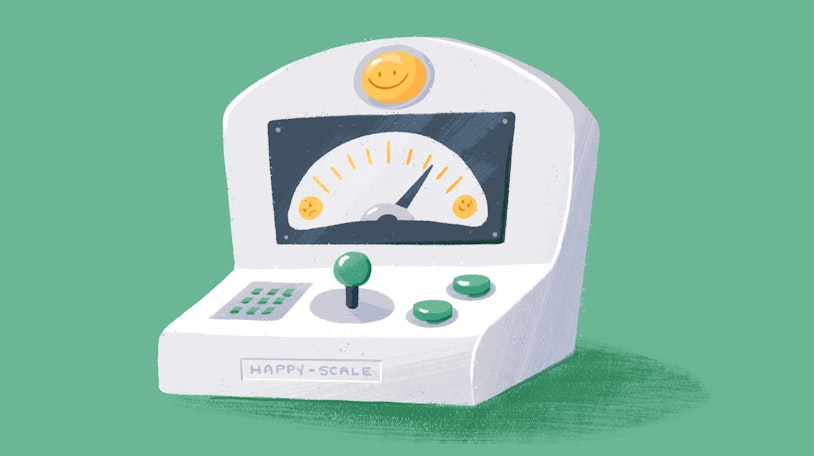When it comes to understanding your customers' perception of your brand, there is arguably nothing as powerful as a well-crafted customer service survey. Running these surveys regularly enables you to engage directly with your customers and gain insights into their experiences, which will then provide valuable data to assist in improving your products, services, and overall operations.
In this guide, we'll provide a list of questions you might want to include in your customer surveys and why, and we’ll share tips on best practices for requesting customer feedback. Additionally, you'll learn how to interpret and use those results to drive improvement and growth.
What are customer service surveys?
Customer service surveys are essentially check-ins with your customers. Imagine being able to conduct a one-on-one conversation with each customer — these surveys are a time-efficient way of doing that. They're designed to gather meaningful feedback on your customers' experiences with your service or product, often resulting in actionable data that you can put to work right away.
Integrating customer service surveys into your brand’s strategy can be a powerful gauge of customer needs and satisfaction. The insights gained help you make informed decisions, whether that’s enhancing your product, streamlining your service, or reshaping the customer journey. They're not just about collecting data; they're a way to show your customers that you're actively listening and willing to make changes that matter to them.
Understanding common customer service survey terms
If you’re new to customer service surveys, you're going to encounter a variety of terms. Let's explore some of these terms.
CES (customer effort score): This measures the effort your customers have to go through to do something, like getting an issue resolved or finding a product on your website. The easier, the better.
CSAT (customer satisfaction score): This is the go-to indicator of how satisfied customers are with a specific interaction or with your service overall. High CSAT scores are your aim here.
NPS (Net Promoter Score): This helps identify how many of your customers are fans (promoters) and how many are less enthused (detractors), calculated by asking how likely they are to recommend your product or service.
Dropout rate: This is the percentage of respondents who start but don't finish your survey. You want this to be low, so always strive for engaging and concise surveys.
Feasibility: This considers how practical your survey is. Can the questions be easily understood? Is the survey an appropriate length? Feasibility ensures your survey is as respondent-friendly as possible.
Explicit/implicit: Explicit feedback is direct — your customer specifically says what they liked or didn't like. Implicit feedback is read between the lines, derived from behavior or choices.
GIGO (garbage in, garbage out): Simply put, the quality of your survey's outcomes depends on the quality of what you put into it. This includes your survey design, question clarity, and answer options.
Incompletes: Surveys that aren’t finished fall into this category. Tracking and minimizing incompletes is crucial to maximizing the feedback you collect.
Margin of error/confidence interval: This statistical term represents the degree to which your survey results could differ from the overall population's feelings. Smaller margins of error indicate more confidence in your survey's representation of your customer base.
Population: This is the group you're ultimately interested in learning about. In the case of a customer service survey, your population is likely all your customers or a specific segment of them.
Psychographics: While demographics tell you who your customer is, psychographics tell you why they buy. This might include personal beliefs, values, and motivators.
Quantitative/qualitative: Quantitative data gives you the numbers like how many, how much, and how often. Qualitative data gives you the narrative — thoughts, stories, and reasons behind behaviors.
Response rate: This is the portion of people who completed your survey out of those who were asked. The higher the rate, the more solid the data you can glean from your survey.
Sample: This is the part of your customer population that’s selected to represent the whole in your survey. The key is to ensure that your sample matches the diversity of your entire customer base for accurate feedback.
The benefits of conducting customer service surveys
Understanding your customers' needs and experiences is like having a road map for your business's journey toward improvement and success. Conducting customer service surveys is a crucial step in gathering this essential feedback. Let's take a look at two key reasons why these surveys are so important and how they can provide valuable insights for product and process improvement.
Product and process improvement
Feedback is the cornerstone of growth for any business. It serves as a mirror, reflecting not only the strengths of your products or services but also areas that need enhancement. By actively seeking feedback through customer service surveys, you're telling your customers that their opinions matter, fostering a sense of value and loyalty. This process allows you to identify specific aspects of your product or service that customers are happy with and those that may require adjustments.
Moreover, in today’s fast-paced market, the ability to quickly adapt and refine your offerings based on customer feedback can set you apart from competitors. It encourages continuous improvement, ensuring that your product or service evolves in alignment with customer expectations and emerging trends. This proactive approach can significantly enhance customer satisfaction and loyalty, ultimately contributing to your business's long-term success.
Valuable customer insights
Customer service surveys offer a direct line to your customers’ thoughts and feelings about their experiences with your company. They can uncover not just superficial reactions but deep insights into how your products or services are actually being used, perceived, and valued. These surveys can provide quantitative data that highlight trends and patterns as well as qualitative feedback that offers deeper understanding into customer sentiments.
Furthermore, the structured nature of surveys allows you to ask targeted questions that address specific areas of your business operations. This can range from product features and usability to customer support and overall satisfaction. By analyzing the responses, you can pinpoint exactly where your business excels and where there is room for improvement. This level of insight is invaluable in shaping decision-making processes and strategic planning.
22 customer service survey questions to ask
Customer survey questions can be categorized based on their purpose, the nature of the data they seek to collect, and the way they engage respondents. We recommend creating a customer service survey template for each type of feedback you need. Here’s a list of customer survey questions broken down into five types to help you get started.
Customer satisfaction survey questions
Customer satisfaction questions are used to measure how well a company's product or service meets, exceeds, or falls short of customer expectations. They offer direct insight into what's working well and what areas may require improvement. These questions can show the likelihood of repeat business, the potential for positive word-of-mouth promotion, and serve as early indicators of market trends.
By regularly assessing customer satisfaction using ratings and yes or no customer service survey questions, businesses maintain a customer-centric approach, which helps in building loyalty and long-term relationships. Additionally, this feedback can be used to benchmark performance over time or against competitors.
Examples:
How would you rate your overall satisfaction with the product/service you received? (Scale from 1 to 10, with 1 being very unsatisfied and 10 being very satisfied.)
Considering your complete experience with our company, how likely are you to recommend our products or services to a friend or colleague? (NPS surverys run on a scale from 0 to 10.)
What did you like most about your experience with our product/service?
Was our product/service able to meet your needs effectively? (Yes/No; If no, please explain.)
What, if anything, would you change about our product/service to better meet your needs?
Product/service usage questions
Product/service usage questions enable you to understand how customers are actually interacting with your products or services. This makes it possible to identify which features are most popular and which may require more attention or improvement.
Understanding usage patterns also aids in product development and innovation, as real customer data can be used to prioritize which new features or changes might be most impactful.
Examples:
How often do you use our product or service? (Daily, Weekly, Monthly, Rarely)
Which features of our product/service do you use the most?
In what context or situation do you most commonly use our product/service?
Did you find our product/service user-friendly when you first started using it? (Yes/No; If no, what was difficult?)
Compared to our competitors, how do you rate our product in terms of usability? (Better, About the same, Worse; Please explain.)
Customer effort score (CES) questions
Customer effort score questions measure the ease with which customers can achieve their goals when interacting with your product or service. Lower effort typically indicates higher customer satisfaction, loyalty, and repurchase intention.
CES feedback can be pivotal for streamlining processes, reducing customer pain points, and ensuring that the provided solutions are user-friendly. By focusing on reducing customer effort, you can not only enhance your customer service but also differentiate your company in a competitive market.
Examples:
When you contacted us for support, how easy was it to interact with our customer support team? (Very difficult, Somewhat difficult, Neutral, Somewhat easy, Very easy)
After purchasing, how easy was it to set up and start using the product? (Very difficult, Somewhat difficult, Neutral, Somewhat easy, Very easy)
When you contacted us for support, did we resolve your issue promptly and with minimal effort on your part? (Strongly agree, Somewhat agree, Neutral, Somewhat disagree, Strongly disagree)
Customer expectations and desires questions
Asking customers about their expectations and desires enables you to align product offerings with customer needs. You can use this feedback to refine your value proposition, ensuring that marketing and communication strategies set accurate customer expectations.
Understanding customer desires can also drive innovation and help prioritize the development of new features, services, or products. By keeping the customer's voice at the center of development, you can increase the likelihood of market acceptance and continued engagement.
Examples:
Before purchasing our product/service, what was your top expectation, and did we meet it?
What additional features would you like to see in our product/service in the future?
How well does our product/service align with what was promised in our marketing or advertising? (Not at all, Somewhat, Very well; Please provide more detail.)
What other services or products do you wish our company offered?
Post-purchase feedback questions
Post-purchase feedback questions provide an understanding of the customer journey after the point of sale. This feedback is great for assessing the overall buying experience, identifying any roadblocks in the purchase process, and improving after-sales support.
Collecting post-purchase insights can also show the perceived value of the product or service, which enables you to maintain competitive pricing and offers. This feedback can also help you develop loyalty-building opportunities and effective customer retention strategies.
Examples:
What motivated you to choose our product/service over our competitors?
How smooth was the purchasing process on our website or in our store? (Very difficult, Somewhat difficult, Neutral, Somewhat easy, Very easy)
If you experienced any issues with your product/service after purchase, were they addressed efficiently? (Yes/No; If no, please provide more detail.)
How satisfied are you with the after-sales support you received? (Very unsatisfied, Unsatisfied, Neutral, Satisfied, Very satisfied)
Did you find our product/service to be a good value for your money? (Yes/No; If no, why not?)
Best practices for requesting customer feedback
Knowing what to ask is only part of the customer survey equation. Here are some best practices and strategies for developing a beneficial customer service survey process.
Choose the right time to ask
Timing can be everything. Reach out for feedback when the experience is fresh in the customer's mind, whether it's immediately after a purchase, after an interaction with customer service, or at the end of a significant project. This ensures that the feedback is both reflective of the customer’s true experience and includes details that can guide improvements.
Customer service tools like Help Scout’s microsurveys are a great way to gather customer insights without being intrusive. This tool lets you reach out for feedback at specific points in the customer journey, which means you can gather feedback while the customer’s experience is top of mind.
Keep it simple
The key to getting customers to respond is making it as easy as possible for them. Long surveys can be overwhelming, so keep questions clear, concise, and relevant. It’s about striking the right balance between getting the information you need and respecting the customer’s time and effort.
Be specific with your questions
Vague questions lead to vague answers. Instead of asking if they're happy with your service, pinpoint aspects you want feedback on, like the checkout process, product range, or customer support.
Follow up on feedback
Customers who take the time to provide feedback are engaged in your brand, and they’ll appreciate knowing that their voice is heard. A simple acknowledgment can go a long way toward fostering trust with your customer base.
How to use survey results
Gathering feedback from your customers is like striking gold, but striking gold is only the first step. Whether through direct changes based on CSAT feedback, strategic shifts informed by report trends, or internal education spurred by documentation insights, each step you take based on feedback is a step toward a more customer-centric business model.
Here’s how you can apply customer feedback effectively.
Identify patterns and trends: Look beyond individual comments and identify recurring themes or concerns. These patterns can highlight areas in need of improvement or potential opportunities you might not have considered.
Prioritize action based on feedback: Not all feedback will require immediate action, but some might highlight critical issues. Use customer feedback to prioritize changes that will have the most significant impact on customer satisfaction and business success.
Share insights across teams: Feedback shouldn't be siloed within the customer service team. Sharing customer insights across departments ensures that everyone understands customer needs and how they can contribute to meeting those needs.
Track changes and outcomes: After implementing changes based on feedback, track the outcomes. This will help you understand the impact of your actions and guide future decisions.
There are several Help Scout reporting features that make the process of deciphering customer feedback a whole lot easier.
Happiness report: This report can give you a high-level view of customer satisfaction over time. Use it to identify trends in satisfaction and correlate them with specific actions or changes within your business.
Microsurvey reports: Microsurveys can yield specific insights into various aspects of your customer experience. Analyzing the results can help you understand customer sentiment on new features, customer service interactions, and more. Pay attention to changes in responses after implementing new processes or updates.
Docs article reports: If you use customer self-service options like a knowledge base, understanding which articles are helping (or confusing) your customers can be incredibly valuable. These reports can inform you which areas of your product or service need clearer documentation or highlight topics that may require more in-depth customer education.
Leveraging customer service surveys for growth
For customer service and marketing teams, few things are as precious as the voice of your customers. CSAT surveys, microsurveys, and feedback reports all play crucial roles in this process.
Help Scout's customer feedback tools are designed to seamlessly integrate into your interactions, be it via email, chat, or docs. While you create remarkable experiences for your customers, these tools work silently in the background, gathering valuable insights without interrupting the customer journey.
Whether it’s the simplicity and directness of CSAT surveys, the timeliness of microsurveys, or the impactful insights from different reports, Help Scout's functionalities are designed to help you understand your customers better.
Sign up for a free trial of Help Scout today, and start having better conversations with your customers.





